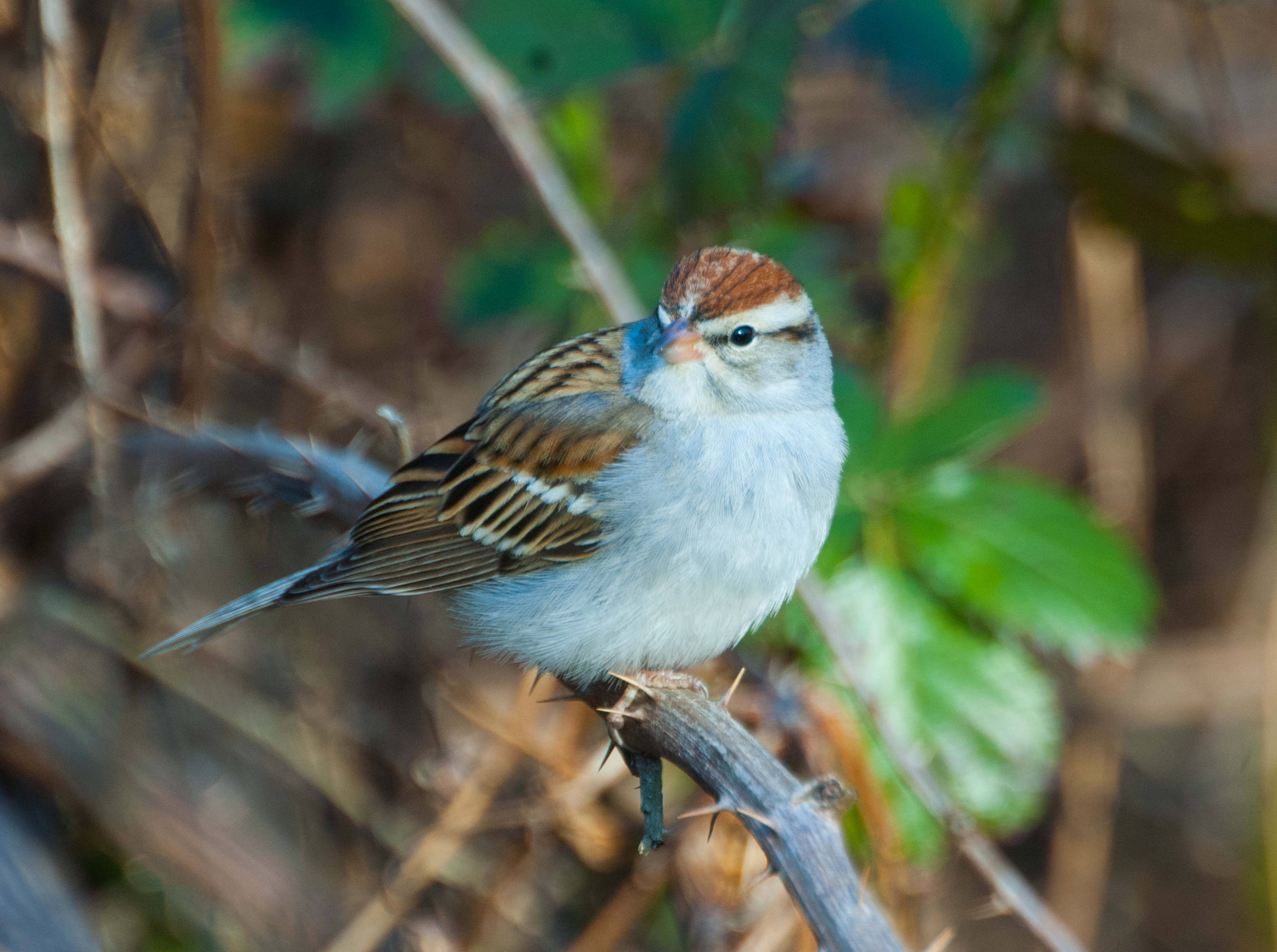

An inhabitant of open woodlands, the species benefitted from the clearing of North America’s eastern deciduous forest in the 1800s. Although its breeding density may be lower in some regions of the state than in others, it remains a common and even abundant species throughout most of Minnesota. Although it is present statewide, the lowest breeding densities are predicted to occur along the North Shore of Lake Superior in eastern Lake and Cook Counties and in the Tallgrass Aspen Parklands Province in northwest Minnesota.Ītlas data confirm that the Chipping Sparrow remains as widespread today as it was in Roberts’s day, more than one hundred years ago. The Chipping Sparrow’s predicted distribution map, which integrates MNBBA data with habitat, landscape context and climate data, predicts the species’ highest breeding densities are attained in the Twin Cities metropolitan region as well as in other communities throughout the Eastern Broadleaf Forest Province (Figure 4). They were confirmed breeding in all but 1 county, Faribault. Chipping Sparrows were the seventh most commonly detected species during the entire atlas and were reported from each of Minnesota’s 87 counties. Breeding evidence was documented in 13.7% (657) of the surveyed blocks (Figures 2 and 3 Table 1). MNBBA participants reported a total of 6,349 Chipping Sparrow records in 65.4% (3,135/4,792) of the surveyed atlas blocks and in 83.8% (1,959/2,337) of the priority blocks. Reports were common from all but the most intensively cultivated regions of the Red River valley ( Minnesota Department of Natural Resources 2016). The Minnesota Biological Survey reported a total of 973 breeding season locations. Hertzel and Janssen ( 1998) later added another 11 counties to the list. Janssen also included a map identifying 45 counties where nesting had been confirmed since 1970. Green and Janssen cited its abundance in the eastern and central regions of the state, while Janssen claimed it was most abundant in the eastern and northern regions. Green and Janssen ( 1975) and Janssen ( 1987) each described the species as a common summer resident throughout the state. Little has changed since the days of Roberts. So common was this species in urban settings that Roberts ( 1932) described it as the “most thoroughly domesticated of all our sparrows.” Here, the nest may be found at some distance from the ground in a tamarack or spruce tree in the midst of wild, densely wooded bogs, where a second look is required to satisfy one that the owner is really the sociable little Chippy of the garden shrubbery at home. It is equally at home in wilder places and is an abundant bird in the spruce groves and open glades of the northern forests, where, like the Robin, it seems somewhat out of place to those who are wont to associate it with civilized surroundings. It dwells familiarly about our homes and builds its nest in the ornamental shrubbery, even in the vines and shrubs about our doorsteps. Roberts wrote a charming account of the species’ different habitations: Inferred nesting reports (e.g., feeding young and nest building) were documented from Goodhue, Houston, Lake of the Woods, and Stearns Counties and from Cass Lake. Louis Counties and from Itasca State Park. Confirmed nesting reports (nests with eggs) were available from Crow Wing, Hennepin, Isanti, Polk, Sherburne, and St. In the early 1900s, Roberts ( 1932) considered the Chipping Sparrow a common breeding species throughout the state with the exception of the northern Red River valley.


 0 kommentar(er)
0 kommentar(er)
